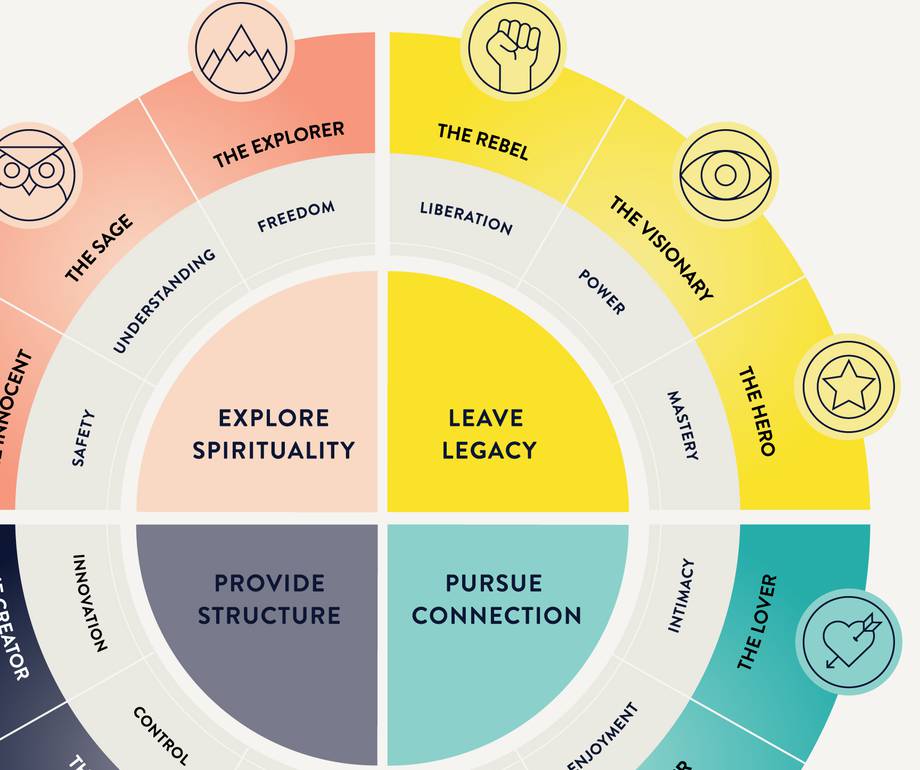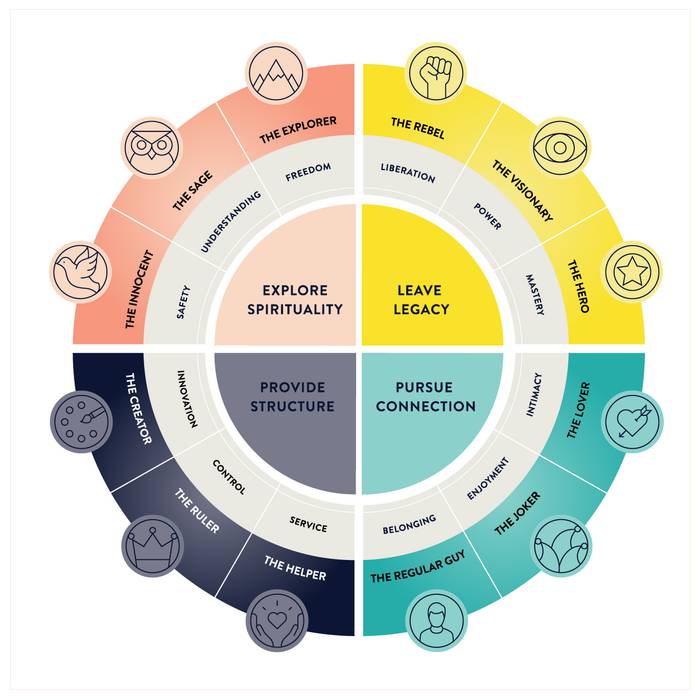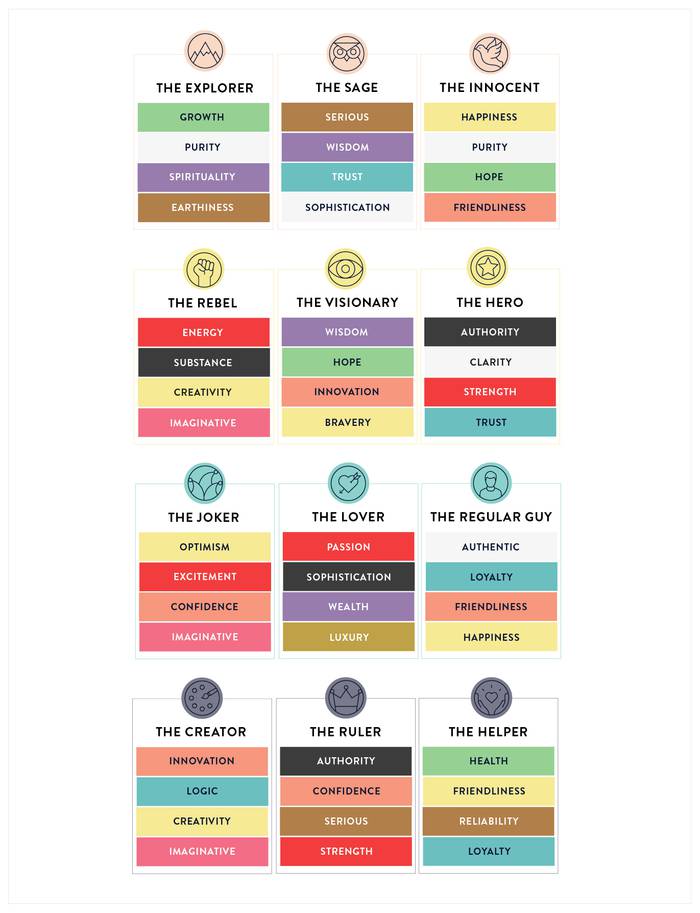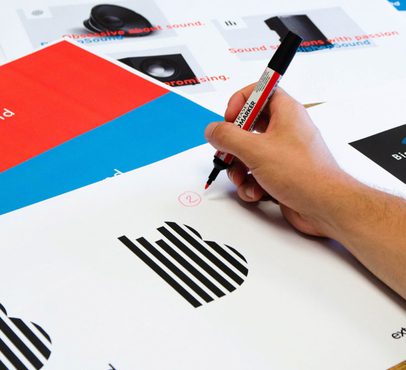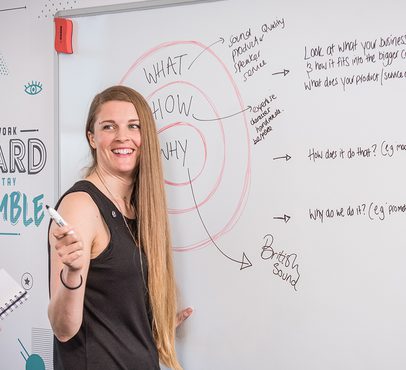What is a brand archetype?
A brand archetype is a representation of your brand - based on key human desires and traits - that helps encourage a particular feeling or sentiment around it. A brand’s archetype should drive a narrative between the brand and the audience, forging connections, driving interest and encouraging loyalty.
Archetypes are more than a persona, they tap into sometimes latent feelings and desires we have as people and one of the things that make them powerful is their universality and their ability to transcend cultures and geographical location. While you may not have heard of brand archetypes, their existence and execution has undoubtedly impacted how you’ve engaged with brands you know and love.
Dating right back to Greek mythology, archetypes have since been underpinned by years of psychological research into how we respond to things and why. So brands that do this well have a much higher success rate with their audiences as it can help foster loyalty, interest and even feelings of love.
Archetypes by nature are things we all seek out, crave and covet; we’re talking now about things like safety, comfort, joy - these are not tied to one group of people, they are universal, primitive and inherent in their nature. It is these things which brands, in selecting an archetype to align with, are tapping into and each archetype relates to one of our ‘needs/desires’.
Archetypes are not to be confused with your brand’s identity - your identity is who you are and the archetype is the way you tell that story to your audience (coupled with other factors such as tone of voice, which we also wrote about recently) - together, these choices you make will ultimately decide how different audiences relate to you and your product or service.
Harvard Business School’s Professor Gerald Zaltman says that ‘95 percent of our purchase decision making takes place in the subconscious mind’ - this is why being aligned with an archetype, in order to foster deep emotional connections with your audiences, matters. Speaking to what makes your customers ‘tick’ in a way that is inherent, often subconscious can make a huge difference to their interactions with you.
What are the different brand archetypes?
There are 12 brand archetypes to align with; because they meet different needs, it is advisable for brands to truly understand their audiences and their own aims before focusing on one. Some brands successfully straddle more than one, but usually this is because they choose two similar/linked ones. Choosing one is ideal as it shows you know yourself and the people you’re trying to engage with - the closer you are aligned to these audiences, the more loyalty and trust will grow.
Let’s take a look at each archetype and what each one represents and conveys about the brand it’s representing.
The Explorer
As you’d expect, The Explorer is about freedom, adventure, ambition. Explorers are driven to do and find more, and are independent. People who connect with this archetype like to be different and by their nature they don’t like to feel stagnant or trapped. If you look at all the options and feel like you don’t see your brand there, it’s likely that’s because you're an explorer and don’t want to feel pinned to something.
Exploration can mean many different things to different people, so it may be taken very literally - in the case of an outdoor clothing brand, where the desire to be adventurous is apparent, but it could also relate to nomadic, explorer tendencies either literally or introspectively - perhaps your brand encourage people to live beyond boundaries, explore a more spiritual or enlightened life without being bound to things and places.
Examples of Explorer brands: The North Face, Jeep, National Geographic and NASA.
The Sage
The Sage is about knowledge, wisdom and truth. People attracted to this type of brand are seeking reliable information, empowerment and want the world to be a better place. Sage brands teach, mentor and guide people. Brands that align with this type are fearful of being misled or ill-informed and trust their audiences to understand complex concepts.
Examples of sage brands: BBC, New York Times, Google.
The Innocent
The Innocent philosophy is one of simplicity, seeking happiness and usually optimistic. Fans of the innocent approach tend to see the positive in everything and believe in things working out as they should - they just want to be happy. People that connect with the innocent approach are fearful of unhappiness and getting things wrong/being in trouble.
Examples of innocent brands: Dove, Innocent, McDonald’s.
The Rebel
As the name might suggest Rebel brands don’t like to conform, their approach is that of rebellion, pushing boundaries testing limits. Brands tend to embody this archetype by encouraging others to embrace change, break the norm or be more free spirited.
These brands like to be disruptive, use voices for change and are not opposed to a little anarchy!
Examples of outlaw brands: Harley Davidson, Virgin and Diesel.
The Hero
Everyone loves a hero! Hero brands want to save the day; they want to be seen as brave, bold and ready for anything. They are determined, driven and happy to push themselves to the limit to get the right outcome. They do not like being seen as weak, easily bested or a pushover. They have a drive to better themselves and continuously improve.
Examples of hero brands include: Nike, Duracell, Adidas.
The Visionary
Visionary brands are driven to bring our wildest desires and dreams to life. They excite, problem-solve and surprise by nature. You might feel aligned to this if your brand has a transformational element to it - tired to refreshed, lost to found for example.
Examples of visionary brands include: Disney, Dyson, Polaroid, Red Bull
The Joker
Also sometimes known as the jester, is driven to be the life and soul of the party. They want to entice, excite and engage and will happily take you along for the ride. The joker is focused on optimism, having a good time and making the most of fun and downtime. They don’t take themselves too seriously, but they care about making sure you don’t either.
Examples of joker brands: Ben & Jerry's, M&Ms, Skittles.
The Lover
Lover brands want to attract you, want to be attractive and seek to entice, be noticed and ooze sensuality. They want to evoke desire and be desired, so lover brands are often plush, luxurious. Think glamour, best self, looking and feeling on top of the world. They hate to go unnoticed and are designed to pull you in.
Examples of lover brands include: Victoria’s Secret, Chanel, Alfa Romeo.
The Creator
Creators want to go where no one before them has, finding new solutions, pushing the limits to unveil new and lasting offerings that enhance life for those around them. Innovation is at the core of the creator. Creator brands hate to stand still or slow down, there’s only one direction for them and it’s forward.
Examples of creator brands include: Lego, Apple, Etsy and Adobe.
The Ruler
These brands are here for control, to win. They are focused on achievement, success and being the best - they want you to accept no substitutes. They are articulate, smooth and in it to win it. Ruler brands hate to be seen as weak, hate to fail and hate to be beaten.
Examples of ruler brands include: Mercedes, Louis Vuitton, Rolex
The Helper
These are nurturing brands that promote a sense of safety, security and wholesomeness. Their purpose is to help, support and care. These brands are often associated with wellbeing, health and children. They don’t like carelessness or harshness.
Examples of helper brands include: Huggies, The Salvation Army, Unicef.
The Regular Guy
These brands tend to appeal to a broad range of people, they avoid brash or outlandish claims and speak plainly and authentically. They don’t mince their words or try to be anything they aren’t. They simply..are. Regular Guy brands want to encourage a sense of belonging, of finding your place and avoiding exclusion.
Examples of regular guy brands include: Ikea, ebay, Levis.
If you’re reading this then you probably have an idea of where your brand sits right now, but it can be hard to choose if you relate to more than one. As we mentioned earlier, the closer you align to your chosen archetype, the more authentic your brand will be and the more it will appeal to those audiences.
Colour psychology and brand archetypes
The archetype you reflect with your brand also involves certain, specific colour choices. Within branding we use certain colours to help the audience feel a certain emotion so as they engage with that brand/product. Certain colours can be used for each of the above to help reinforce that specific archetype. We have outlined common colours and their archetype pairings:
After some assistance with your archetypes?
If you think this sounds like a lot of hard work, or you just don’t know where to start, we would love to help. Drop our team of branding experts a message today, or give us a call on 01423 396959.
Let's build your brand.
Send us a messagePost by

Amy joined in 2014 to set up our Content department. She now heads up a growing Brand and Content team, utilising over 13 years’ experience to deliver brand awareness through targeted, multi-channel copy. As well as engaging content for websites and blogs, Amy delivers PR strategies and tone of voice exploration, helping clients to communicate the purpose and values of their brand with maximum impact.
Project
